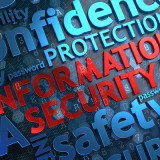Setting up your home network? To keep it secure, don’t forget about your router.
Why pay attention to that little box with the flashing lights? Your router lets you connect with the internet and communicate with other devices in your home. So, it’s your first line of defense in guarding against attacks by identity thieves and hackers.
How can you make your router more secure? Start with these steps:
Important Consumer Note!
No Credit/Bad Credit? Click here to build your credit score using a real credit card (not a prepaid or debit card that won't help your credit)!A high credit score can allow you to get a lower rate loan, lower your insurance premiums and may even help you get a job! (sponsor link)
Important Consumer Note!Want to get a prepaid Visa with no monthly fees with direct deposit and with more benefits and features such?
If so, then consider the Go2Bank Cash Rebate Visa- Click Here for More Info and to Apply Online in Just Mins (No Fee with Direct Deposit).
(Sponsor Link)
- Change the name of your router. The name of your router (also called the SSID or service set identifier) is usually a default ID assigned by the manufacturer. Change it to something only you know.
- Change your router’s pre-set passwords. Your router also usually comes with a default password. Hackers know these default passwords. So, change yours to something unique, long and complex – think at least 12 characters, with a mix of numbers, symbols and upper and lower case letters.
- Turn off any “remote management” features. Some routers offer remote management for tech support. Don’t leave these features enabled. Hackers can use them to get into your home network.
Once your router is set up, don’t just stick it in a corner gathering dust. Instead, keep it up to date. Over time, the software that comes with your router may need updates. Visit the manufacturer’s website periodically to see if there’s a new version available for download. Or register your router with the manufacturer and sign up to get updates. If you lease a router, check if your internet service provider issues updates automatically.
For more tips on router safety and computer security, check out the FTC’s updated article on securing your wireless network. And if your system is hacked and your information exposed, visit identitytheft.gov for a recovery plan.
This article by the FTC was distributed by the Personal Finance Syndication Network.
